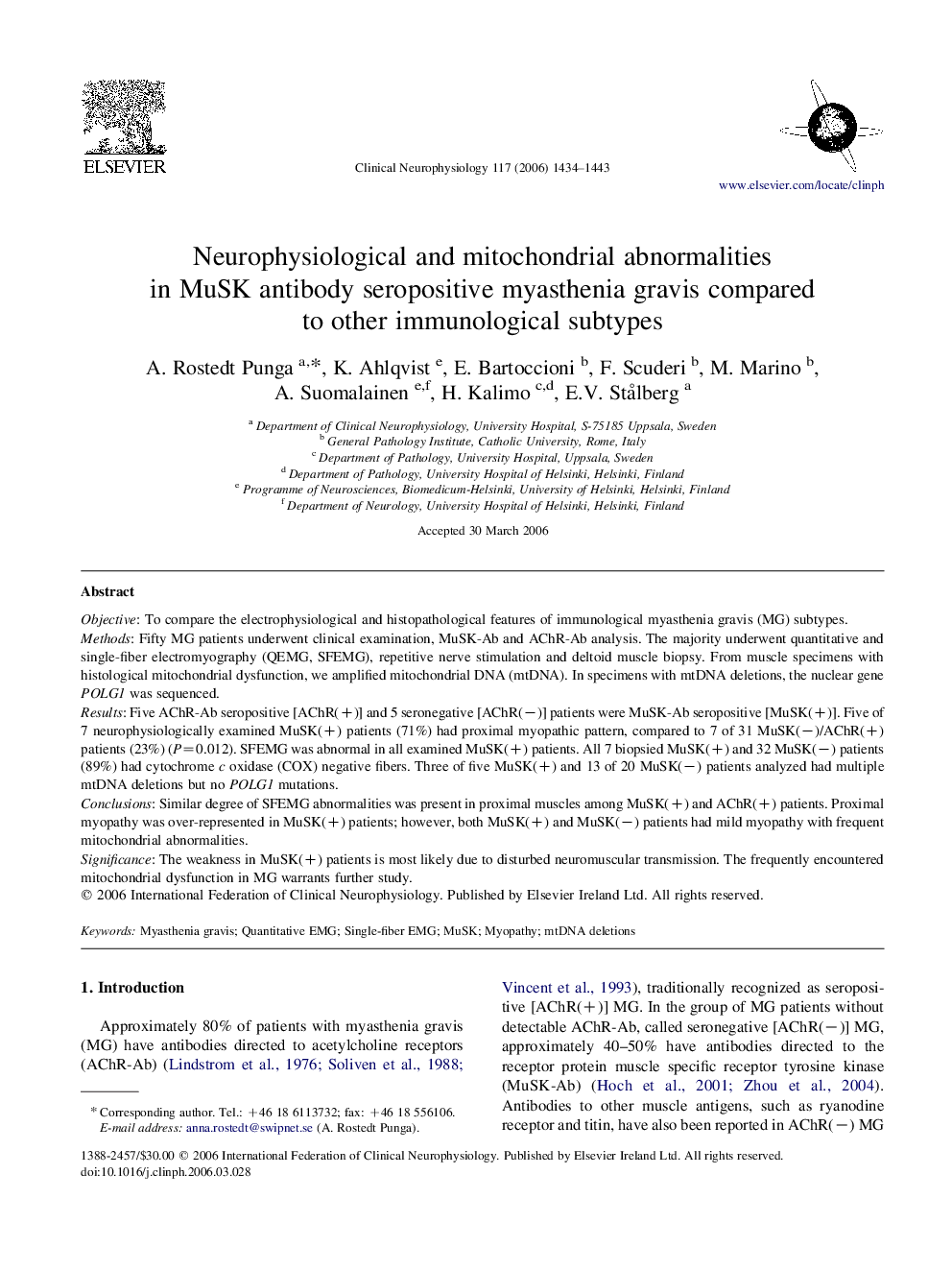| Article ID | Journal | Published Year | Pages | File Type |
|---|---|---|---|---|
| 3048097 | Clinical Neurophysiology | 2006 | 10 Pages |
ObjectiveTo compare the electrophysiological and histopathological features of immunological myasthenia gravis (MG) subtypes.MethodsFifty MG patients underwent clinical examination, MuSK-Ab and AChR-Ab analysis. The majority underwent quantitative and single-fiber electromyography (QEMG, SFEMG), repetitive nerve stimulation and deltoid muscle biopsy. From muscle specimens with histological mitochondrial dysfunction, we amplified mitochondrial DNA (mtDNA). In specimens with mtDNA deletions, the nuclear gene POLG1 was sequenced.ResultsFive AChR-Ab seropositive [AChR(+)] and 5 seronegative [AChR(−)] patients were MuSK-Ab seropositive [MuSK(+)]. Five of 7 neurophysiologically examined MuSK(+) patients (71%) had proximal myopathic pattern, compared to 7 of 31 MuSK(−)/AChR(+) patients (23%) (P=0.012). SFEMG was abnormal in all examined MuSK(+) patients. All 7 biopsied MuSK(+) and 32 MuSK(−) patients (89%) had cytochrome c oxidase (COX) negative fibers. Three of five MuSK(+) and 13 of 20 MuSK(−) patients analyzed had multiple mtDNA deletions but no POLG1 mutations.ConclusionsSimilar degree of SFEMG abnormalities was present in proximal muscles among MuSK(+) and AChR(+) patients. Proximal myopathy was over-represented in MuSK(+) patients; however, both MuSK(+) and MuSK(−) patients had mild myopathy with frequent mitochondrial abnormalities.SignificanceThe weakness in MuSK(+) patients is most likely due to disturbed neuromuscular transmission. The frequently encountered mitochondrial dysfunction in MG warrants further study.
